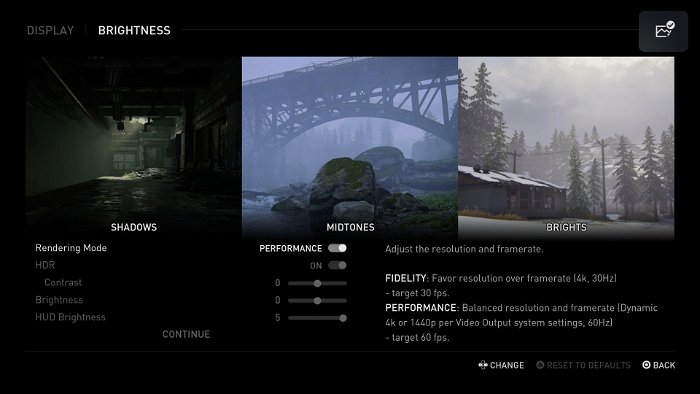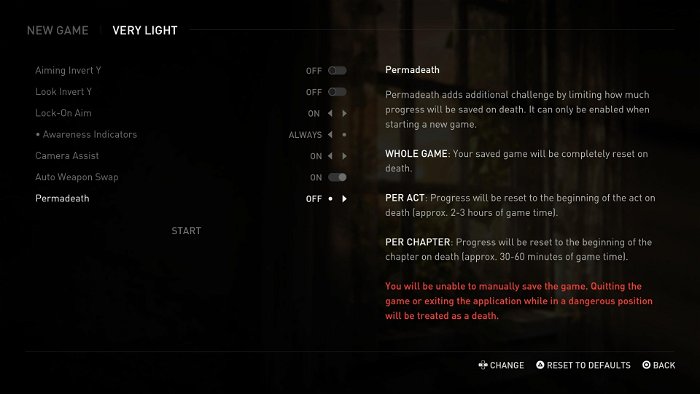I remember playing The Last of Us on the PS3 when it originally came out in the summer of 2013. Between The Last of Us and FIFA 13, I had no time to spare for anything else. Fast-forward 9 years, and The Last of Us Part I has completely high-jacked all of my time, again.
The Last of Us Part I is a remake from the ground up from Naughty Dog studios, and they have spared no expense in making it look and play incredibly. It took all of about 10 in-game minutes for me to be hooked. I remember sitting on my couch in 2013 thinking “man, that sucks…” when the big plot device happens; now when I saw that scene, it completely broke me. I was sucked in, and I couldn’t let go.

To give a little background about the story, it starts off in 2013 (as that was the time of release for the original game) and there is a viral pandemic (how very topical) that affected a majority of the population, turning them in to cannibalistic creatures. Not quite zombies, but you get the idea. The player controls Joel, and he is tasked with escorting a young girl named Ellie across the apocalypse-ravaged United States. It’s an oversimplification, sure, but at its core, that’s what we’re dealing with.
When you first load up the game, a few menus prompt you for some input as to your difficulty preferences, brightness, etc. The Last of Us Part I also asks you to select your rendering mode, of which there are three options: Fidelity, which favours resolution over framerate (this is your 4k, 30hz output) and targets 30fps; Performance, which offers balanced resolution and framerate (4k or 1440p, depending on your Video Output system settings, and is 60hz) and targets 60 fps; and Performance+ mode, which neither of my TVs supported, sadly, as it requires Variable Refresh Rate (VRR).
Visually, The Last of Us Part I is absolutely stunning. There were multiple times during my playthrough that I just stopped and admired the environments. Joel and Ellie look stunning in 4K, and the detail put into their character models is remarkable. When compared to the original release from 2013, this remake truly shows the capability of the console to deliver stunning graphics and incredible visuals.
“The Last of Us Part I is a remake from the ground up from Naughty Dog studios, and they have spared no expense in making it look and play incredibly.”
Naughty Dog has gone to great lengths to include expanded accessibility options, allowing you to choose your video experience, as well as things like your Navigation and Traversal, Motion Sickness, Combat Accessibility, and more. Being able to customize things like my field of view really made the experience better since I wasn’t getting bludgeoned from the sides nearly as often as I was prior to adjusting the slider.



When starting a new game, you’ll have the option to choose your difficulty, amongst other things. There is a new feature in The Last of Us Part I when you start a new game, and it’s called Permadeath. Permadeath has three settings attached to it, so it’s not the immediate game over that it sounds like: Per Chapter, Per Act, and Whole Game.
Per Chapter resets your progress back to the beginning of the chapter if you happen to die in the game, which can cost you anywhere from 30-60 minutes of game time. Per Act is very similar, but you get reset to the beginning of the act instead, which can cost you between 2-3 hours of play. Whole Game is just that: if you die in the game, there goes your whole game file. It gets completely reset back to the beginning.
Permadeath also has a warning attached that you will be unable to manually save the game. It also says that quitting or exiting the application (dashboarding) while in a dangerous position will be treated as a death. Naughty Dog was not fooling around when they made this mode, and wanted to make it abundantly clear that Permadeath mode is not for the faint of heart.

One fun additional feature included in The Last of Us Part I is something called Speedrun Mode. Speedrun mode essentially enables an in-game timer that keeps track of your current time and best playthrough lengths. Speedrun mode pauses when you enter a cinematic or a scene transition, and can only be enabled after completing the main story one time first. There will be a small UI representation in the top right corner of your screen that displays the current playtime, the best playtime and the name of the chapter. I really liked this addition, especially with the prevalence of speed runs in gaming of late.
One of my favourite things about The Last of Us Part I is the PS5’s DualSense integration. Things like haptic feedback and adaptive triggers are very prevalent and are found all over the game in places you’d least expect. For example, in the Screen Reader and Audio Cues section of the Accessibility settings, there is an option called Speech to Vibrations. This brilliant feature allows any spoken dialogue to also be played through the controller in the form of vibrations. The vibrations intensify if the dialogue is also intense, and the vibrations are soft if the dialogue is softer, and everything in between.
“One of my favourite things about The Last of Us Part I is the PS5’s DualSense integration.”
Adaptive triggers are also very prevalent in The Last of Us Part I, mostly in the form of aiming your various weapons. I found the most appropriate use of this coming from using the bow. When Joel pulls an arrow back and draws it tighter and tighter, you can feel the resistance in the trigger. Stuff like this only furthers the immersion for me and I can’t get enough of it.

When you are playing a game like The Last of Us Part I, sound is going to be of critical importance. Naughty Dog has upgraded their audio engine in this title and makes use of the PS5’s 3D Audio capabilities. You’ll be able to hear which side of you the clickers are coming from to rip you apart, or you’ll be able to hear the footsteps of NPCs walking by like never before. Big sound moments become even bigger with the inclusion of 3D Audio capability.
Also included in The Last of Us Part I, is the Left Behind chapter, that features Ellie and her best friend Riley. I won’t say much about this as Naughty Dog recommends it for people who have finished the main story first, but seeing a bit of Ellie’s backstory was very cool.
“All in all, The Last of Us Part I is a fabulous remake (from the ground up, no less), of a genre-defining masterpiece.”
Absent from The Last of Us Part I is the Factions multiplayer mode. Naughty Dog wanted to focus on the main story of the game, divorced from the multiplayer component. That’s not to say that it isn’t coming, as Naughty Dog say that they are working on a standalone multiplayer experience set in The Last of Us universe.

Improved and tighter controls round out The Last of Us Part I experience. One of the things I worried about before playing was that the controls would feel tank-y. Thankfully, this is not the case, as Joel gets around about as well as one would expect for a man of his age, in the apocalypse no less. Weapon-play is just as smooth. It isn’t unrealistic as there is plenty of weapon sway and other factors in there to make sure that you take your time when lining up a shot, because ammo is scarce in the apocalypse, rightly so I might add.
All in all, The Last of Us Part I is a fabulous remake (from the ground up, no less), of a genre-defining masterpiece. All the elements are here from what made the first game so loved, and on the PS5, with all the updates and improvements done, is something that can stand the test of time.






